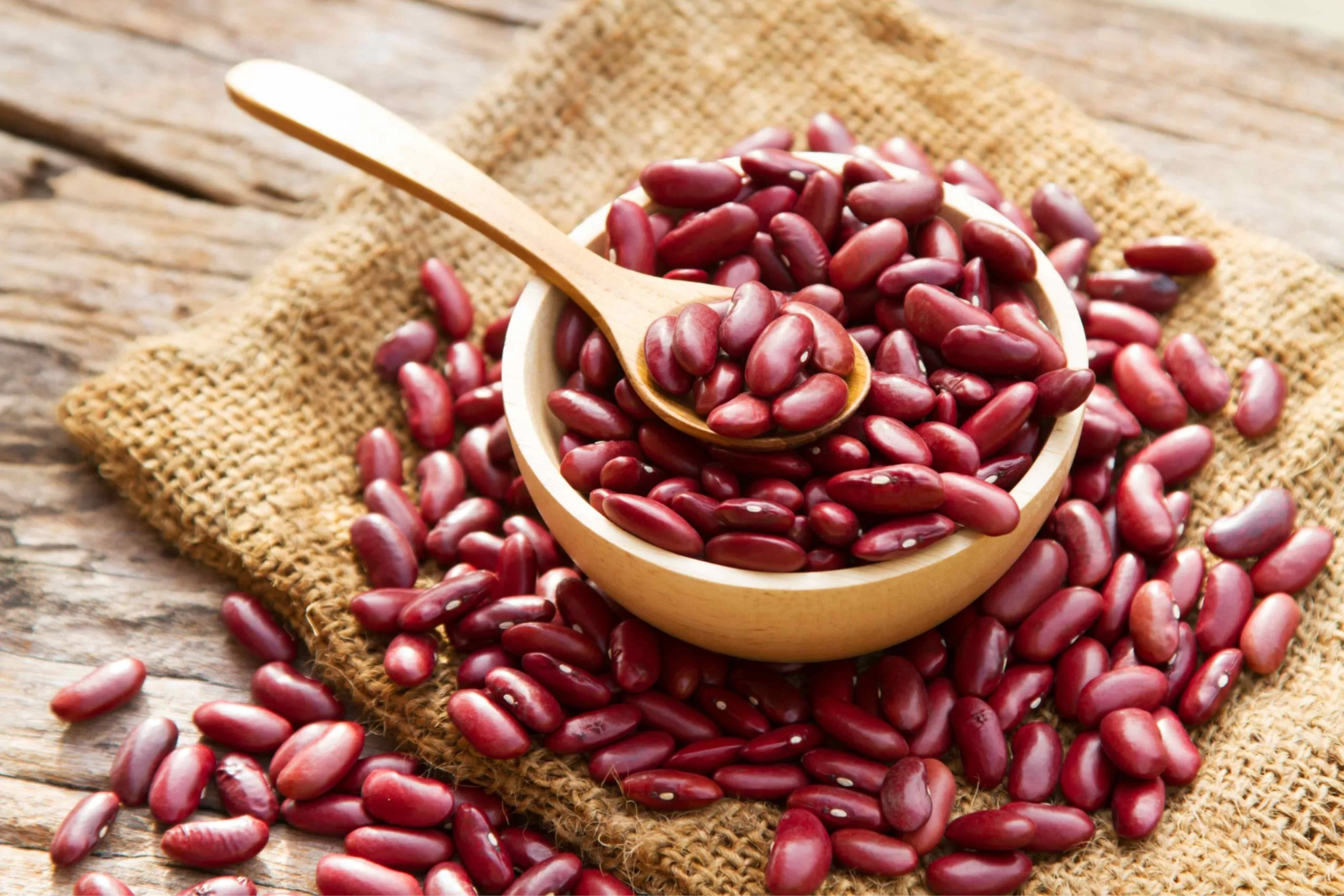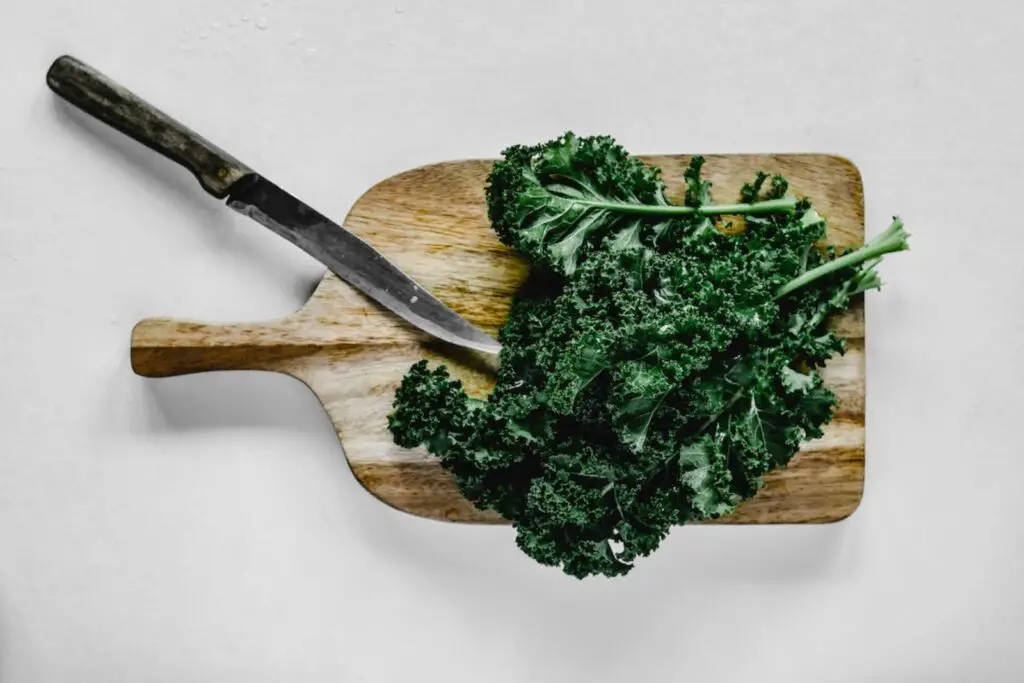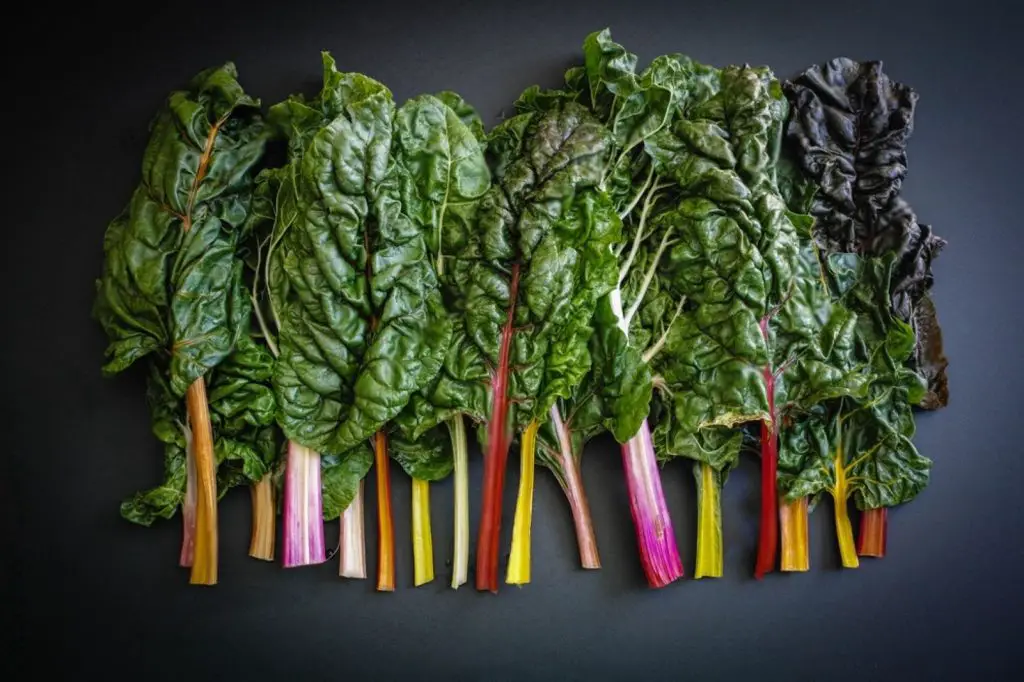
Kidney beans are a versatile and nutritious legume that can be used in a variety of dishes, such as soups, salads, and chili. Freezing kidney beans is a great way to extend their shelf life and have them readily available for future use. By following a few simple steps, you can freeze kidney beans while preserving their texture and flavor. This article provides a comprehensive guide on how to freeze kidney beans, ensuring that you can enjoy their goodness long after their season has passed.
Here’s a step-by-step guide on how to freeze kidney beans:
Step 1: Select fresh kidney beans
When it comes to freezing kidney beans, choosing fresh and high-quality beans is essential for maintaining their flavor and texture. Here’s why:
- Freshness: Opting for fresh kidney beans ensures that you freeze them at their peak quality. Fresh beans are firm, crisp, and full of flavor, which translates into a better end result when you thaw and cook them later on.
- Texture: Fresh kidney beans have a desirable texture that is tender yet firm. They hold their shape well during cooking and retain their characteristic creaminess. By selecting fresh beans, you’ll have a better chance of preserving this pleasing texture after freezing.
- Flavor: High-quality kidney beans boast a delicious taste that enhances various recipes. They have a rich, earthy flavor that can add depth and heartiness to soups, stews, salads, and more. Freezing fresh beans helps lock in their natural flavors, allowing you to enjoy their full potential when you incorporate them into your dishes later.
- Mold and damage: It’s important to inspect the kidney beans before freezing them. Look for beans that are free from any signs of mold, discoloration, or damage. Moldy beans can spoil the entire batch and affect the flavor and safety of the frozen beans. Damaged beans, such as those with cracks or bruises, may not freeze or thaw evenly, leading to an undesirable texture.
Step 2: Sort and wash the beans
After selecting fresh kidney beans, the next step is to sort and wash them before freezing. This process is crucial for ensuring that only clean and healthy beans make their way into the freezer. Here’s why sorting and washing are important:
- Inspecting for quality: Sorting the kidney beans allows you to identify and remove any beans that are discolored, shriveled, or otherwise damaged. These beans may not freeze or store well and can negatively affect the overall quality of your frozen batch. By removing them, you ensure that only the best beans are preserved.
- Removing debris: Kidney beans, like any other dried legumes, can sometimes contain dirt, dust, or other debris from the packaging or storage. Washing the beans under cold water helps remove these unwanted particles, ensuring that your frozen beans are clean and ready for consumption when thawed.
- Removing impurities: In some cases, kidney beans may contain small stones or foreign objects that have made their way into the packaging during processing or storage. By carefully inspecting and rinsing the beans, you can identify and remove any such impurities, preventing any potential harm or unwanted surprises when using the beans later on.
- Improving safety: Washing kidney beans before freezing is an extra step to ensure food safety. Although kidney beans are typically cooked before consumption, rinsing them reduces the chances of any contaminants on the surface of the beans affecting the quality or safety of the frozen product.
Step 3: Soak the beans (optional)
Soaking kidney beans before freezing is an optional step that can offer several benefits, such as reducing cooking time and improving their texture. Here’s why soaking is recommended and how to do it:
- Reducing cooking time: Kidney beans are known for their relatively long cooking time. Soaking the beans overnight can help soften them and significantly reduce the time needed for cooking. This can be particularly useful when you later use the frozen beans in recipes that require less cooking time or when you want to save time in your meal preparation.
- Improving texture: Soaking kidney beans can also enhance their texture by rehydrating them. When dry beans are soaked, they absorb water, which helps them plump up and become more tender. This can result in kidney beans that are creamier and less likely to have a mealy or grainy texture when cooked.
- How to soak kidney beans: To soak kidney beans, place them in a large bowl and cover them with enough water. Make sure the water level is at least a couple of inches above the beans, as they will expand during soaking. Allow the beans to soak overnight, or for at least 8 to 12 hours. After soaking, drain and rinse the beans thoroughly under cold water. This step helps remove any residual starch or impurities that may have been released during soaking.
It’s important to note that soaking kidney beans is not mandatory for freezing them. If you prefer not to soak, you can skip this step and proceed directly to blanching and freezing the beans. However, soaking can offer time and texture benefits, making it a worthwhile option to consider.
Step 4: Blanch the kidney beans
Blanching kidney beans before freezing is a crucial step that helps preserve their color, texture, and flavor. It involves briefly cooking the beans in boiling water and then rapidly cooling them. Here’s why blanching is important and how to do it:
- Preserving color: Blanching kidney beans helps retain their vibrant color even after freezing. The quick cooking process halts the enzyme activity that can cause discoloration and helps lock in the beans’ natural pigments. This ensures that the beans maintain their appealing appearance when you thaw and use them in recipes.
- Maintaining texture: Blanching also helps maintain the desirable texture of kidney beans. The brief boiling time partially cooks the beans, making them tender yet still firm. This ensures that the beans retain their characteristic creaminess and hold their shape well during freezing and subsequent cooking.
- Preserving flavor: By blanching kidney beans, you can help preserve their natural flavors. The short cooking time ensures that the beans are not overcooked, preventing any loss of flavor. This way, when you use the frozen beans in recipes, they will still contribute their distinct taste to the dish.
- How to blanch kidney beans: To blanch kidney beans, start by bringing a pot of water to a rolling boil. Add the beans to the boiling water and let them cook for approximately 2 to 3 minutes. It’s essential to keep an eye on the beans during this time to prevent overcooking. After the blanching time, quickly transfer the beans to a bowl filled with ice water. The ice water bath halts the cooking process and helps cool down the beans rapidly. Allow the beans to sit in the ice water for the same amount of time as they were boiled. Drain the beans thoroughly after blanching to remove excess moisture.
Can I freeze kidney beans without blanching them?
While blanching is recommended to maintain the quality of kidney beans during freezing, it is possible to freeze them without blanching. However, be aware that skipping the blanching step may result in a slight loss of texture and quality.
Step 5: Arrange and flash-freeze the beans
After blanching the kidney beans, the next step is to arrange and flash-freeze them. Flash freezing involves freezing the beans quickly to individually freeze them and prevent clumping. Here’s why this step is important and how to do it:
- Preventing clumping: By spreading the blanched kidney beans in a single layer on a baking sheet or tray, you ensure that they freeze individually without sticking together. If the beans are frozen in a clumped or tightly packed manner, it becomes challenging to separate them later on when you only need a portion of beans for a recipe. Freezing them in a single layer allows for easy portioning and prevents them from forming a solid mass.
- Individual freezing: Flash freezing kidney beans individually has several advantages. Firstly, it helps preserve the texture of the beans by preventing them from sticking together and forming ice crystals. This means that when you thaw and cook the beans, they will retain their individual texture and won’t become mushy. Secondly, flash freezing enables you to measure out precise portions of beans as needed, rather than having to defrost an entire clump of beans.
- How to flash-freeze kidney beans: Once you have spread the blanched kidney beans in a single layer on a baking sheet or tray, place the tray in the freezer. It’s best to make sure the beans are not touching or overlapping each other. Let the kidney beans freeze for a few hours, or until they are completely frozen. The exact freezing time may vary depending on the temperature of your freezer. The aim is to freeze the beans quickly to minimize the formation of ice crystals and maintain their quality.
Step 6: Package and seal the kidney beans
Once the kidney beans are flash-frozen, the next step is to transfer them into suitable freezer-safe containers or bags. Proper packaging and sealing are important to maintain the quality of the beans during storage. Here’s why this step is crucial and how to do it:
- Preserving freshness: Packaging the kidney beans in freezer-safe containers or bags helps protect them from exposure to air and moisture. This prevents freezer burn, which can lead to a deterioration in the quality and flavor of the beans over time. By securely sealing the packaging, you create a barrier that preserves the freshness and taste of the frozen beans.
- Minimizing freezer burn: Freezer burn occurs when frozen food is exposed to air, leading to the loss of moisture and the development of dry, discolored patches on the surface. Removing excess air from the packaging before sealing helps minimize the risk of freezer burn. It ensures that the beans are well-protected and maintain their quality during their time in the freezer.
- Maintaining portion control: Properly packaging the kidney beans also allows for better portion control. By dividing them into smaller quantities, you can easily take out the desired amount of beans without having to defrost the entire batch. This is particularly useful when you only need a portion of beans for a specific recipe or meal.
- How to package and seal kidney beans: Transfer the flash-frozen kidney beans into freezer-safe containers or bags. Ensure that the containers or bags are specifically designed for freezer use to withstand the low temperatures. Remove any excess air from the packaging by pressing down gently or using a vacuum sealer if available. This step minimizes the chances of freezer burn. Seal the containers or bags tightly to create a secure and airtight seal.
Step 7: Label and date the packages
Labeling and dating the packages of frozen kidney beans is a crucial step in ensuring their freshness and proper usage. By providing clear information about the contents and freezing date, you can keep track of the beans and use them within a reasonable time frame. Here’s why labeling and dating are important and how to do it:
- Identification and organization: Labeling each package of kidney beans allows you to easily identify its contents. It eliminates any confusion that may arise when you have multiple frozen items in your freezer. When you label the packages, you can quickly find the kidney beans you need without having to thaw and inspect each package.
- Freshness control: By dating the packages, you establish a record of when the kidney beans were frozen. This information is valuable for monitoring their freshness and quality. Different foods have varying recommended freezer storage times, and kidney beans are no exception. With the date labeled, you can ensure that you use the beans within a reasonable timeframe to maintain their best taste and texture.
- Rotation and usage planning: Labeling and dating also enable you to practice proper food rotation. By using the oldest packages first, you ensure that none of the kidney beans are left in the freezer for too long. This helps prevent waste and ensures that you always have a fresh supply of kidney beans on hand.
- How to label and date the packages: Use a permanent marker or labels to write the contents (kidney beans) and the date of freezing on each package. Be sure to write legibly and place the label in a visible area. If using bags, you can also write directly on the bag. Ensure that the labeling is clear and won’t smudge or fade over time.
Step 8: Store in the freezer
After properly packaging the kidney beans, the next step is to store them in the freezer. Proper freezer storage is crucial for maintaining the quality and extending the shelf life of the frozen beans. Here’s why storing them correctly is important and how to do it:
- Temperature control: The ideal temperature for freezing kidney beans is 0°F (-18°C) or below. At this low temperature, the growth of microorganisms is inhibited, preserving the freshness and quality of the beans. Ensure that your freezer maintains a consistent temperature within this range to prevent any fluctuations that could compromise the integrity of the beans.
- Preserving quality: Freezing kidney beans at the recommended temperature helps retain their flavor, texture, and nutritional value. It slows down the degradation processes, such as enzyme activity and oxidation, that can lead to a decline in quality. By storing the beans in the freezer, you can enjoy their goodness for an extended period.
- Preventing freezer burn: Proper freezer storage also minimizes the risk of freezer burn. Freezer burn occurs when frozen food is exposed to air, resulting in dehydration and the development of dry, discolored patches. By ensuring that the kidney bean packages are tightly sealed and stored in airtight containers or bags, you create a barrier that helps prevent freezer burn and maintain the quality of the beans.
- Organized storage: When placing the packaged kidney beans in the freezer, aim for an organized storage system. Keep similar items together and arrange the packages in a way that allows for easy access and visibility. This makes it more convenient to find and retrieve the beans when you need them, minimizing the time they spend outside the freezer.
How long can I store frozen kidney beans?
When stored properly in a freezer at 0°F (-18°C) or below, kidney beans can typically be stored for up to 6 months. However, for the best quality and flavor, it is recommended to use them within 3-4 months.
Other related questions
How do I defrost kidney beans?
To defrost kidney beans, you have a few options:
- Overnight Refrigerator Thawing: Place the desired amount of frozen kidney beans in a bowl or container, cover, and refrigerate overnight. This slow thawing method ensures even defrosting while maintaining the quality of the beans.
- Cold Water Thawing: Seal the frozen kidney beans in a resealable plastic bag, ensuring it’s tightly closed. Submerge the bag in a bowl of cold water, changing the water every 30 minutes. This method thaws the beans more quickly than refrigeration but requires active monitoring.
- Quick Thawing in the Microwave: Transfer the frozen kidney beans to a microwave-safe dish and use the defrost setting or lower power setting. Microwave in short intervals, pausing to stir the beans between each interval until fully thawed but not heated.
Regardless of the method chosen, avoid thawing kidney beans at room temperature or under warm water, as these can promote bacterial growth. Once defrosted, use the kidney beans immediately in your recipe or store them in the refrigerator for a few days.
Can I refreeze kidney beans?
No, it is generally not recommended to refreeze kidney beans once they have been thawed. Freezing and thawing beans can affect their quality, texture, and safety. It is best to use the thawed kidney beans promptly or store them in the refrigerator and consume within a few days.
How do I know if the kidney beans have gone bad after being frozen?
After being frozen, you can determine if kidney beans have gone bad by checking for signs of spoilage. Look for any noticeable changes in color, texture, or odor. If the beans appear discolored, have a mushy or slimy texture, or emit a foul smell, it is an indication that they may have spoiled and should not be consumed. It is essential to prioritize food safety and discard any kidney beans that show these signs of spoilage.
Can I freeze kidney beans in their canned form?
While it’s technically possible to freeze canned kidney beans, it’s generally not recommended. Canned beans have already been cooked and processed, which can affect their texture and flavor after freezing. It’s best to freeze raw or cooked kidney beans that have been prepared from dried beans.
Can I freeze kidney beans for salad or other cold dishes?
While kidney beans can be frozen for salads or cold dishes, it’s important to note that their texture may change after freezing and thawing. Thawed kidney beans can become softer and slightly less firm, which may affect their suitability for certain cold dishes. Consider this when deciding to freeze kidney beans for salads.
Can I freeze kidney beans with seasonings or spices?
It’s generally recommended to freeze kidney beans without seasonings or spices. Seasonings can sometimes alter the taste and texture of the beans after freezing. It’s better to add seasonings and spices when you cook the beans after thawing.
Can I freeze kidney beans in large batches?
Yes, you can freeze kidney beans in large batches. However, it’s essential to portion them into smaller containers or bags before freezing. This allows for convenient usage and prevents the need to thaw the entire batch when you only need a portion.








